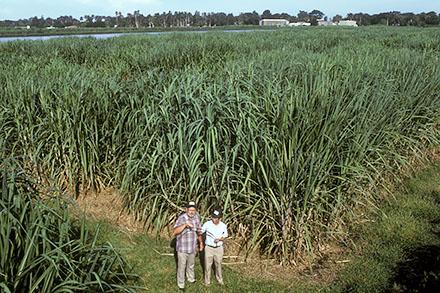New Cultivars Vitalize Cajun State’s Sugar Industry

Bananas Foster, beignets, pralines, and king cake are classic desserts in Louisiana, and the thing that ties them together is sugar. Lots of sugar. As it turns out, sugar’s origins are just as wild as you might expect for a plant that grows in the land of Mardi Gras; sugarcane, the most famous source of sugar, is a weedy grass.
Louisiana is unique among sugarcane-producing areas because its “weeds” come from more than one species. That’s a good thing because scientists at the Agricultural Research Service’s (ARS) Sugarcane Research unit in Houma, LA, use genetics to breed new varieties every 13 years or so to stay one step ahead of pests and diseases and promote other beneficial traits.
In this case, sugarcane variety HoCP14-885 features disease-resistance, the ability to withstand freezing temperatures, and contain greater sugar content — which allows the industry to produce sugar in half the time it takes many other countries. The ARS scientists can trace the pedigree of HoCP14-885 back 16 generations to the late 1800s.
Sugarcane is big business in Louisiana; the crop is grown on 480,000 acres, employs 19,000 people, and has an annual value of over $2.3 billion.


